Tag Archives: hyperledger
How to Install Hyperledger Explorer & Access Fabric Network
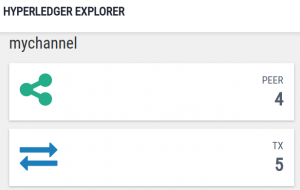
Hyperledgder Explorer is a Blockchain explorer which can be used to view the details on the one or more blockchain network (channels) created using Hyperledger Fabric 1.0. In this post, you will learn about some of the following: Introduction to Hyperledger Explorer App Installation/Setup of Hyperledger Explorer Configure hyperledger explorer for the first network Starting the Explorer App Introduction to Hyperledger Explorer App Hyperledger Explorer is a Nodejs based web app which runs on Node/ExpressJS with MySQL as the backend database. It provides details related Fabric blockchain network (channels) based on configuration provided in the file, blockchain_explorer/config.json. The following represents some of the key details provided by the explorer app vis-a-vis …
Hyperledger Fabric – Are Channels Private Blockchain? (Deep Dive)
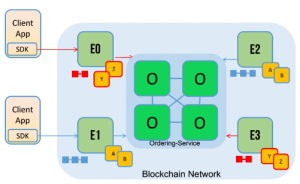
This article represents Hyperledger Fabric Channels concepts and related details in form of some of the following topics: What are Channels? Hyperledger Fabric Blockchain Network is a channel Channels are private and permissioned Blockchain Channels explained with examples Channels – channel configuration, genesis block Ordering service creates a transaction block per channel Blockchain network is categorized into two broad classes: Public network: Anyone can join this type of network. For example, bitcoin network. Private or permissioned network: A member needs to be authenticated by the assigned membership service provider (identity issuing authority service) for joining and conducting transactions in the network. Hyperledger Fabric can be said to be private or permissioned blockchain. …
Hyperledger Fabric – Cryptogen Tool Not Found…Exiting
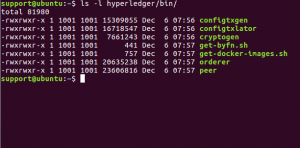
This error, Cryptogen Tool Not Found…Exiting occurred when I tried to build the first network by executing byfn.sh script using following commands for the first time after downloading and installing hyperledger fabric platform binaries/components and fabric samples: The following screenshot represents the error: Why the Error – Cryptogen Tool Not Found This error occurs, primarily, due to the reason that cryptogen tool can be not be found in the path. The path to cryptogen tool needs to be set to PATH variable. This can be confirmed by checking the logs of the script execution by putting the following code (set -x) in the beginning of the file, byfn.sh, as shown below. Note that the code set-x is used to expand …
Hyperledger Fabric Transaction Flow (Interview Q&A & Notes)
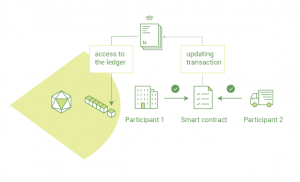
This article represents concepts in relation to, how does a transaction flow in Hyperledger Fabric Blockchain network, in form of notes and interview questions and answers. Those appearing for Hyperledger Fabric interview would find the questions and notes very useful for quick brush-up. Hyperledger Fabric is a platform for distributed ledger solutions. The following represents key participants in Hyperledger Fabric Blockchain network who are involved in the transaction flow right from the initiation of transaction proposal to committing a transaction into the distributed ledger. Application: Gets involved in following capacity: Sends the transaction proposal to endorsing peers Receives the transaction results from endorsing peers Broadcasts the transaction message to ordering service Endorsing peers: Do some of the …
Hyperledger Fabric Distributed Ledger – Interview Questions / Notes
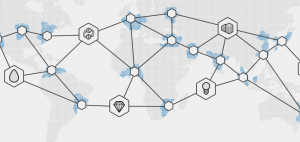
This article represents practice test / interview questions and answers and revision notes on Hyperledger Fabric Distributed Ledger**. These questions and answers can prove to be very helpful to check your knowledge on Hyperledger Fabric if you are appearing for Hyperledger Fabric interview in near future. Hyperledger Fabric is an open-source framework for building distributed ledger solutions. The distributed ledger is maintained by every peer participating in the network. It is stored as a combination of a transaction logs and a world state database (key-value pairs). Revision Notes – Hyperledger Fabric Distributed Ledger Concepts The distributed ledger is a combination of following: Blockchain to store immutable ordered/sequenced records; It is stored in form of transaction logs and stored in peers’ file system (local …
Hyperledger Fabric – Difference between World State DB & Transaction Logs
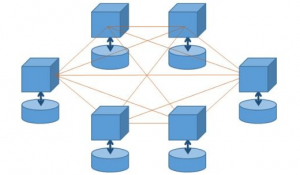
This article highlights key differences between World State Database (DB) and Transaction Logs which comprise the Hyperledger Fabric Distributed Ledger. Hyperledger Fabric Distributed Ledger can be said to be a combination of World State Database (DB) and transaction logs. It requires invocation of chaincode (smart contracts) for interacting with distributed ledgers (world state DB and transaction logs). The transactions are stored in the block in the same sequence in which they occured and this is responsibility of ordering service to ensure the ordering sequence of transactions in the block. World State Database Transaction Logs Stores the chain’s state information in form of key-value pairs Stores chain of blocks consisting of transaction details in form of sequence of transactions Stored in database such as LevelDB …
Hyperledger Fabric Platform Components & Docker Images

This article represents details on installing / setting up Hyperledger Fabric Platform Components / Binaries with emphasis on some of the following: Steps for how to install / setup Fabric platform components & docker images Details on platform components which are used for setting up the Fabric network Details on docker images which comprise Hyperledger Fabric network The installation leads to download /pull of docker images which are required to run the Blockchain network using Hyperledger Fabric. Installing Fabric Platform Components & Docker Images The following command can be used to install Platform binaries: In case Docker commands require sudo, the above command looks like following: The script which gets …
Hyperledger Tools – When / Why to use them?
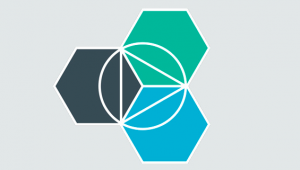
This article aims to present details on when and why to use which Hyperledger tools. The following are different tools which are referred later in this article: Cello Composer Explorer Quilt This article will be updated on regular basis as newer tools come up. When / Why to use which Hyperledger Tools? The following represents details related with the Hyperledger tools: Hyperledger Tools When and Why to use them? Explorer Hyperledger Explorer is a web application which can be used to view, invoke, deploy or query blocks, transactions and associated data, network information (name, status, list of nodes), chain codes and transaction families, as well as any other relevant information stored in the …
Hyperledger Interview Questions and Answers – Set 1

This is the first in series of practice tests / interview questions and answers in relation to Hyperledger products suite for building distributed ledgers / Blockchain business networks. This test focuses on checking your knowledge on different products such as following under hyperledger umbrella. Fabric Sawtooth Iroha Indy Burrow Cello Composer Quilt Explorer Revision Notes – Hyperledger Tools & Frameworks Hyperledger Fabric supports pluggable consensus algorithm (ordering service) and membership service provider Hyperledger Indy can be used to build distributed ledger (Blockchain) related with decentralized digital identities Hyperledger Burrow is used for creating a permissioned Ethereum smart-contract blockchain node that executes smart contract code following the Ethereum specification. Hyperledger Explorer can be used to view, invoke, deploy or query blocks, transactions and associated data, network …
List of Hyperledger Tools & Frameworks for Blockchain Apps
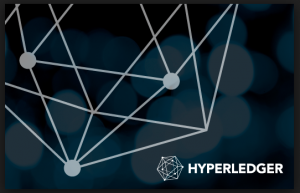
This article represents a list of Hyperledger tools and frameworks for building Blockchain applications and when to use each one of them. Hyperledger Frameworks The following is the list of frameworks that can be used to create blockchain applications based on distributed ledger technology. Hyperledger Fabric Hyperledger Fabric is a blockchain framework implementation. It is one of the foundation framework for developing / building Blockchain applications or solutions with a modular architecture. The most striking feature of Hyperledger Fabric is that it allows components, such as consensus and membership services, to be plug-and-play. At the core of Hyperledger Fabric is container technology which is used to host smart contracts called chaincode that comprise the application logic of the system. The following is the list of cool features of …
Hyperledger Network Certificates & How to Create Them
This blog represents code samples and related concepts on how to create hyperledger network certificates. These certificates will be used by peer nodes in Hyperledger Blockchain network. Crypto Config file for Generating Hyperledger Network Certificates Following is a YAML configuration file which can be used to create certificates for different network entities in the blockchain network. You can save the file with name such as crypto-config.yaml Pay attention to some of the following in above file: There are two high-level entries for organizations managing orderer node and peer nodes. They are OrdererOrgs and PeerOrgs Each org would be defined with attributes such as name, domain, specs, templates, users etc. Specs entry …
Hyperledger Fabric – Hello World with Blockchain Network
Hyperledger Fabric Hello World is about building your first blockchain network. We will make use of fabric-samples provided by Hyperledger. The first Blockchain network will be built using Docker containers. The first network will result in running containers representing some of the following: Two peer nodes each, representing two different organizations. Thus, one organization will have two peer nodes, one of which is called an anchor node and is used to ensure availability. For two organization, there will be four nodes. One node representing Ordering service Management node to do some of the following activities: Join peers to a channel Deploy and instantiate chain code Drive execution of transactions against deployed …
Decentralized Identity Management, Blockchain – Why Bother
This blog represents details on Decentralized Identity Management and why you should care? Given that IBM, Hyperledger has joined Blockchain Identity Consortium makes it much more important to quickly go over the concepts related with decentralized identity management. Check out a related Hyperledger project, Project Indy, on supporting independent identity on distributed ledgers. Traditional Centralized or Federated Identity Management System Conventional identity management systems have always been based on centralized authorities such as corporate directory services , certificate authorities (CA) , or domain name registries. Each of these centralized identity management systems acted as a “root of trust”. In order to have the identity management work across different systems, there is something called as federated identity management. According to Wikipedia post of …
Blockchain – Hyperledger Technology Architecture Viewpoint
The diagram below represents technology architecture viewpoint of hyperledger blockchain framework: Hyperledger framework comprises of four key services/modules at a broader level. They are following: Membership services. Membership services comprise of components such as following: Registration: Registers/enrolls the new users Identity management: Manages identity of the users Audit management Blockchain services: Blockchain services comprise of following components used to manage consensus, storage and transactions: Consensus Manager: Used to implement consensus algorithm; Allows to plug-in extensible/customized consensus module. Consensus manager forms part of ordering service which validates the transaction using VSCC (validation system chaincode), create block of transaction and send them back to peer nodes. Distributed Ledger Ledger storage: Storage such as LevelDB or CouchDB can …
Quick Glance at Hyperledger Fabric Architecture Building Blocks
The diagram below represents application communication viewpoint at key building blocks of Hyperledger Fabric 1.0 architecture: Following are some of the key building blocks of Hyperledger Fabric 1.0 Architecture: Membership Services Provider: Enrolls the clients Peers: Peer nodes can be endorser (endorse proposal for transaction)and committer nodes (write block of transactions to ledger) Chaincode: Smart contract written in Java/Go which is invoked by a transaction. Peer nodes having chaincode becomes the endorser for that chaincode. ESCC (Endorser system chain code) executes the chaincode using proposal and read-write set information. Ledger: Ledger which holds the copy of transactions in form of blocks Ordering service: Consenter service which validates the transaction using VSCC (Validation system chaincode), orders …
Blockchain usecases from Financial Services & Government/Legal/Regulatory
This blog represents some of the Blockchain uses cases in industry domain related with financial services and Government/Legal/Regulatory. The blockchain is getting talked about/implemented in different industry domains such as following: Financial services Government / legal / regulatory Government / legal / identity management Capital markets Healthcare / medical IOT Publishing Supply chain / Logistics Supply chain / Traceability / Anti-counterfeiting Supply chain / Interoperability / Visibility Travel / Hospitality Agriculture I shall be doing a blog series discussing all of the above use cases in detail. In this blog, we will look into some of the use cases in financial services and Government/legal/regulatory. Financial Services Microlending: Small unsecured loans issued …
I found it very helpful. However the differences are not too understandable for me